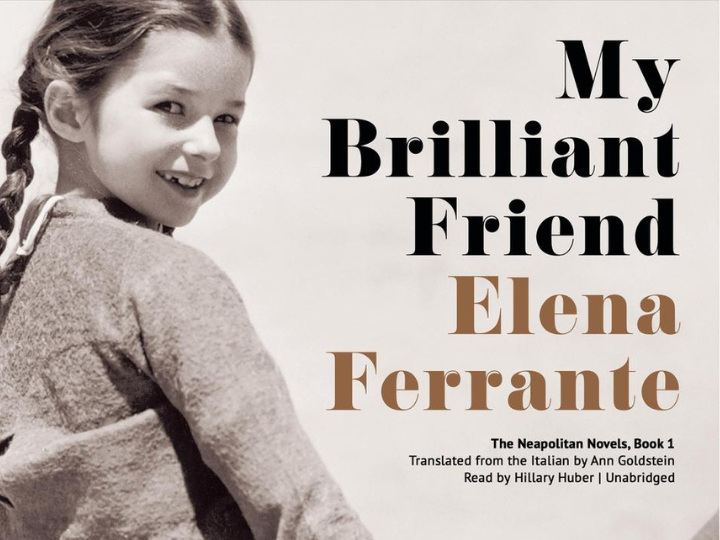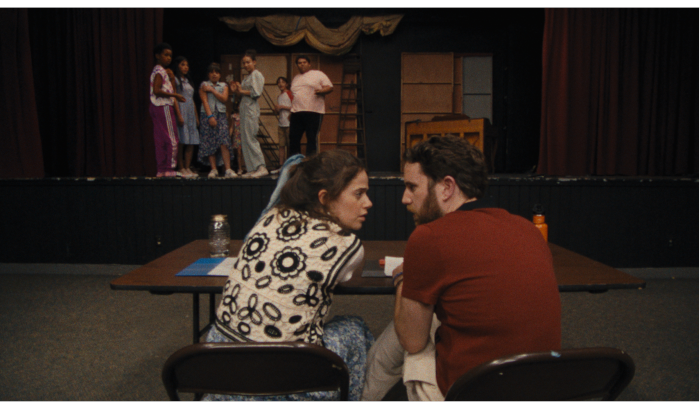How much of the New York Times‘ “Best Novel of the 21st Century” is true to author Elena Ferrante’s life?
In July 2024, the New York Times Book Review unveiled their list of “the 100 Best Books of the 21st Century,” and, among a selection of novels brimming with quality, the one that rose to the top was Elena Ferrante’s “My Brilliant Friend,” the first book in her Neapolitan Novels. The list, as selected by 503 figures in the literary field, sought to quantify the most essential books of the first 25 years of the 2000s.
Ferrante’s novel, first translated into English in 2012 by Ann Goldstein, documents the early life of its two central figures, Elena Greco, in many ways a stand-in for Ferrante herself, and Lila Cerullo, upon the news that Cerullo has gone missing. Ferrante, a lifelong friend of Cerullo’s, begins to write the story of the pair’s life in mid-century Naples in an attempt to reconcile her feelings about the disappearance of her friend.
The novel explores the complicated friendship of Greco and Cerullo during their times in elementary school through the early stages of adulthood, as the two have an extremely competitive relationship. Though both are extremely intellectually gifted, Greco, a hardworking and ambitious writer, relies on the external validation of her often defiant and incalculably charming best friend. The dynamic of the two is the centerpiece of the four novels, which follows their relationship until the present day.

However, Greco’s retelling of the events is far more than a lamentation on the loss of her best friend, because it presents a very real crossroads for her. Because of her inferiority complex, which in some ways was propelled by Cerullo herself, she has lost the person from which she forms herself.
Cerullo was the person who drove her to take up education, to become a writer, and to express herself freely. “My Brilliant Friend,” along with the following three novels in the series, explore this central question: how does one create their own identity when the person who, in a sense, created it, is gone?
How much “My Brilliant Friend” is true to Ferrante’s life is up to interpretation, largely because she avoids the public eye. Though it may initially seem like an obvious connection to make, given the fact that the character and author share a first name, Ferrante herself has cast doubt on this idea.
“If by autobiography you mean drawing on one’s own experience to feed an invented story, almost entirely,” said Ferrante in an interview with Paolo Di Stefano of Corriere della Sera, an Italian newspaper, on the question of whether or not the Neapolitan Novels are a true retelling of her own experience. “If instead you’re asking whether I’m telling my own personal story, not at all.”
Ferrante has later gone on to clarify that adopting the name Elena for the novel helped her write her story in a manner most authentic to her. The story is best understood on a metatextual level when one realizes the fact that Ferrante is potentially framing her own career as a writer through the lens of Greco’s life story.
“Most autofiction trades on the understanding that the author is just playing, or just theorizing, and not really revealing herself, but Ferrante’s work invites the opposite reading,” wrote Katherine Hill in her 2020 review of the series. A significant aspect of engaging with “My Brilliant Friend” is the tantalizing prospect that Ferrante is disregarding the form in which most people choose to tell their life story.
Indeed, even the name Elena Ferrante, is, itself, a pseudonym. Though Ferrante has previously revealed that she herself is from Naples, and her novels certainly betray a classical literary background, little else is known about her personal life, save for what she revealed in Frantumaglia, a collection of letters from her writing career. However, many who have attempted to unveil Ferrante’s true identity, namely investigative reporter Claudio Gatti, along with fake news connoisseur Tommaso Debenedetti, have come under fire.
Nevertheless, even through several layers of abstraction, Ferrante’s connection to Naples is indelible. Specifically in the Neapolitan Novels, whose title itself is a reference to the city, Ferrante exposes the city’s rampant crime and brutality, most notably through the Solara family, meant to represent the Camorra, a large criminal organization in the region.
So much of what makes “My Brilliant Friend” special is the way in which Ferrante grounds herself within the setting of the mid to late 1900s in Naples. It is true that much of the novel is spent discussing what being a woman means to Greco and Cerullo, but so much of that is informed by what stage in her life Ferrante is detailing.
It was only the decade before Greco began her tale, in 1945, that women across Italy gained the right to vote, and it wasn’t until the 1970s that divorce became legal in Italy, itself a vital piece of the story. Greco’s reflection’s on this period of her life, a time in her early childhood during which her rights as a citizen were not fully guaranteed, when education itself was a luxury often only afforded by the rich, drives the story, alongside the main characters’ dynamic.
The wickedness that pervaded Naples in Ferrante’s early days means that, when recounting her childhood, she looks upon it with no particular fondness. Instead, it exists in a state of factuality. Rather than being good or bad, it simply was.
“I feel no nostalgia for our childhood: it was full of violence,” writes Ferrante in the novel’s opening pages. “Every sort of thing happened, at home and outside, every day, but I don’t recall having ever thought that the life we had there was particularly bad. Life was like that, that’s all, we grew up with the duty to make it difficult for others before they made it difficult for us.”
On Sept. 9, HBO will unveil the final season of its critically acclaimed television adaptation of the Neapolitan Novels, directed by Saverio Costanzo. The show, though good by virtue of adopting, and staying faithful to, fantastic source material, is missing the captivating illustrations drawn by Ferrante’s prose. However, it manages to compensate for that due to its transcendent set design. Every suffocating apartment complex, seedy back alley, and intimidating black market is pulled straight from Ferrante’s mind so brilliantly that even the cynical Lila would have to complement it.Whether you choose to tune in to the final season of the show in a short month’s time, or dive headfirst into Ferrante’s story through her prose, take my endorsement of this series, or, for that matter, the New York Times’, with the utmost sincerity.
This article was produced for HorizonMass, the independent, student-driven, news outlet of the Boston Institute for Nonprofit Journalism, and is syndicated by BINJ’s MassWire news service.
Elliott Russo is a Boston-based review writer interested in the intersection of art and social progressivism. He frequently discuses the political and moral implications of different media, such as music, movies, and books, and has an interest in uncovering authorial intentions through scholarly analysis.






